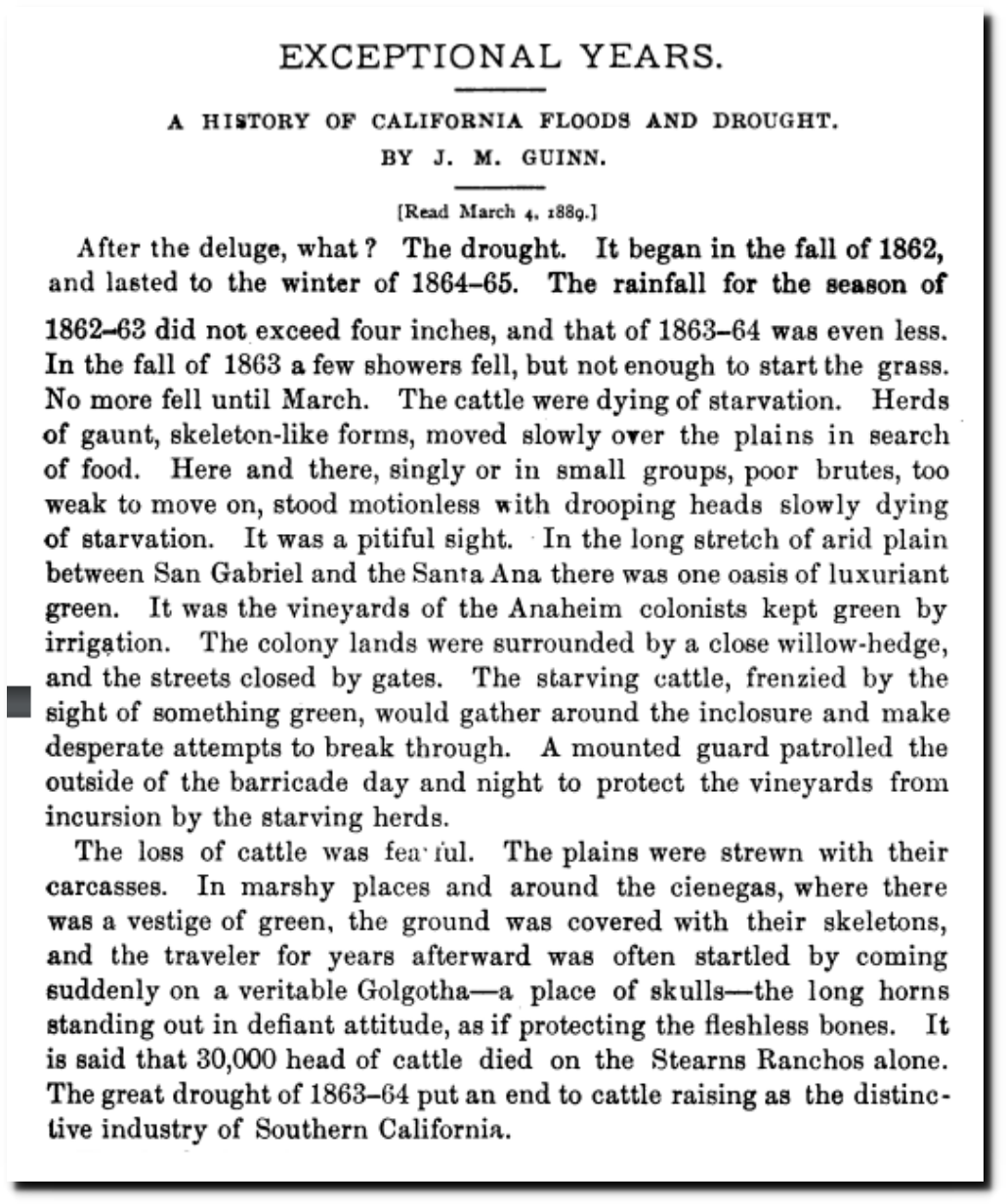“A HISTORY OF CALIFORNIA FLOODS AND DROUGHT.
BY J. M. GUINN.{Read March 4, 1889.)
After the deluge, what? The drought. It began in the fall of 1862, and lasted to the winter of 1864-65. The rainfall for the season of 1862-62 did not exceed four inches, and that of 1863-64 was even less. In the fall of 1863 a few showers fell, but not enough to start the grass. No more fell until March. The cattle were dying of starvation. Herds of gaunt, skeleton-like forms, moved slowly over the plains in search of food. Here and there, singly or in small groups, poor brutes, too weak to move on, stood motionless with drooping heads slowly dying of starvation. It was a pitiful sight. In the long stretch of arid plain between San Gabriel and the Santa Ana there was one oasis of luxuriant green. It was the vineyards of the Anaheim colonists kept green by irrigation. The colony lands were surrounded by a close willow-hedge, and the streets closed by gates. The starving cattle, frenzied by the sight of something green, would gather around the inclosure and make desperate attempts to break through. A mounted guard patrolled the outside of the barricade day and night to protect the vineyards from incursion by the starving herds.
The loss of cattle was fearful. The plains were strewn with their carcasses. In marshy places and around the cienegas, where there was a vestige of green, the ground was covered with their skeletons, and the traveler for years afterward was often startled by coming suddenly on a veritable Golgotha—a place of skulls—the long horns standing out in defiant attitude, as if protecting the fleshless bones. It is said that 30,000 head of cattle died on the Stearns Ranchos alone. The great drought of 1863-64 put an end to cattle raising as the distinctive industry of Southern California.”
EXCEPTIONAL YEARS: A HISTORY OF CALIFORNIA FLOODS AND DROUGHT


